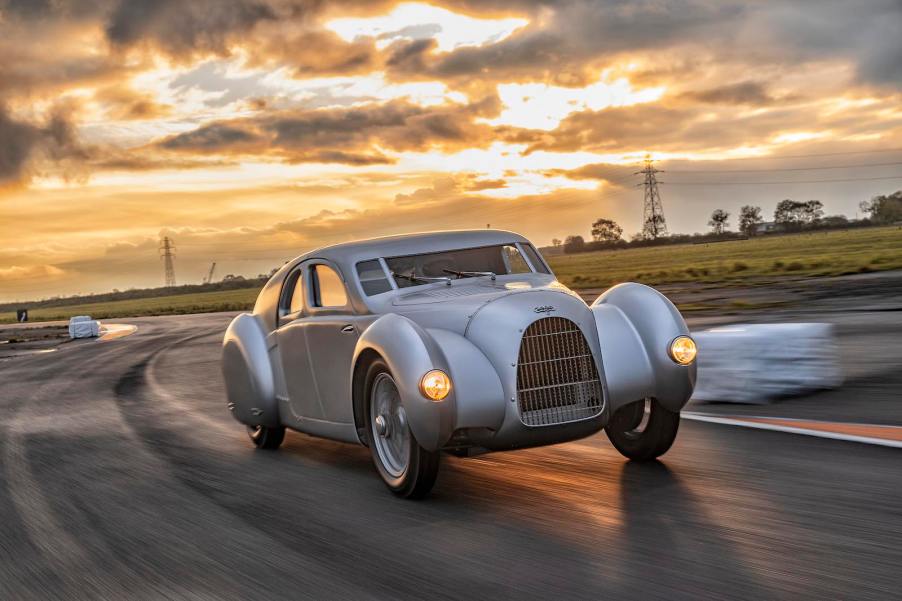
Audi Almost Made a Mid-Engine Three-Seat Supercar…in the 1930s!
The 2006 Audi R8 made mid-engine supercar performance available at a surprisingly low price point. But Audi–with the help of Ferdinand Porsche–almost did the same thing a bit earlier. Seventy years earlier, to be exact.
This tale begins with four struggling German automakers joining forces in 1932. You probably haven’t heard of three of them (Wanderer, DKW, and Horch), but you have heard of Audi. And you’ve definitely seen the four interlocking rings this conglomerate came up with–and uses to this day.
By the 1930s, Bugatti, Alfa Romeo, and Maserati were dominating Grand Prix racing in Europe. And all three were enjoying strong road car sales because of it. So this new company–called “Auto Union” back then–asked Ferdinand Porsche to engineer a race car. And you guessed it, he put the engine in the back.
The Auto Union Type A had a mid-mounted, supercharged V16. In 1934. That’s pretty darn impressive. To be precise, it’s layout was: Radiator, driver, fuel tank, then engine. There was nothing else on the track like it. With new weight limits forcing other Grand Prix cars to downsize their engines, few machines could keep up. Driver Hans Stuck took the podium in five 1934 Grand Prix races and even more hill climbs.
The automaker continued to improve the car, increasing its output with a Type B, Type C, and Type D. Notably, the Type D dropped the size of the engine to a supercharged 3-liter V12, but still increased horsepower to 550. Yes, 550. In 1939. This thing competed against Bugatti Type 35s which made as little as 90 horsepower.
Remember, the goal of racing was to win on Sunday AND sell on Monday. So after some success, Auto Union began dreaming of a road car version. It turned to Ferdinand Porsche again.
A sane move would have been taking this big V12 and dropping it in the front a conservative coupe. But that’s not what Porsche did. He penned what would have been the world’s first production mid-engine supercar: the Auto Union Type 52 ‘Schnellsportwagen.’ It was shelved because. Well. WWII. But has been resurrected.
Audi’s “Tradition” department just completed the first ever Type 52. It upgraded the Schnellsportwagen slightly. Porsche originally designed it with a Type A engine, but the team behind this car decided to use a 550 horsepower 16-cylinder engine from one of the later Auto Union Grand Prix cars. And that’s good because this car weighs 2,800+ pounds empty.
I’m struck by the exaggerated teardrop shape of this car. You have to remember that around the same time Chrysler began to test cars in wind tunnels and found that many contemporary designs would be more aerodynamic driving backwards. (No, I’m not making that up). But Ferdinand Porsche freehanded a remarkably aerodynamic car.
Another futuristic aspect of this car is it’s seating arrangement. Just like in the famed McLaren F1, the driver sits in the middle of the Type 52, with passenger seats on both sides. Yes, it has rear-hinged rear doors. But those are just to access a storage space for spare tires.
The Schnellsportwagen was a true supercar, decades ahead of its time. Audi Tradition is debuting it at the Goodwood Festival of Speed.



